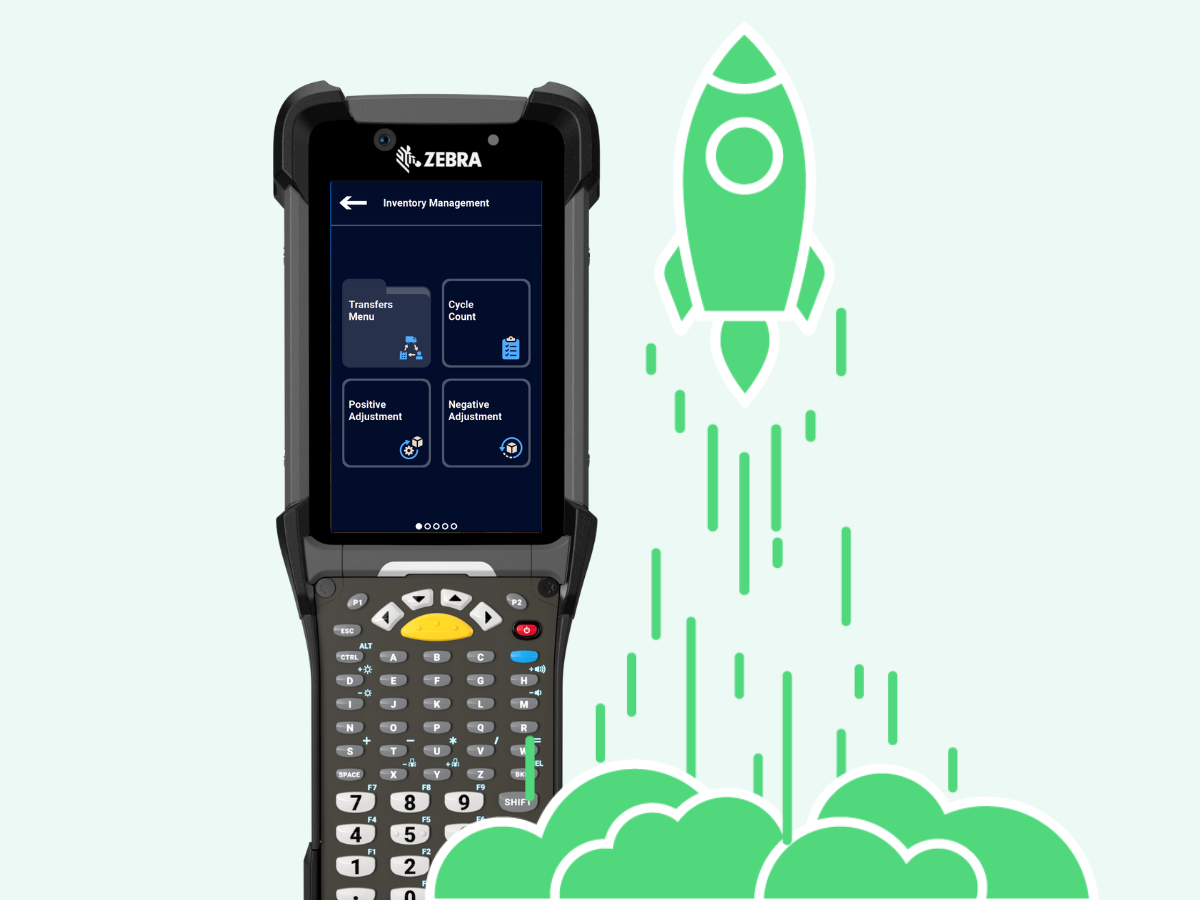Navigating Your Migration to a Cloud-Based ERP Solution: Comprehensive Guide & Checklist
- Digital Transformation
- ERP Systems
TL;DR: This article provides a comprehensive guide on migrating to a cloud-based ERP (Enterprise Resource Planning) solution. It covers the importance of cloud ERP in modernizing business processes, offering increased flexibility, scalability, and cost-effectiveness.
Key topics include understanding cloud-based ERP systems, the benefits of migration, and a detailed pre-migration planning checklist. The article also outlines the roles and responsibilities during the migration process, factors to consider when choosing the right ERP solution, and the critical steps involved in the migration process. Training and support strategies are discussed to ensure a smooth transition, followed by monitoring and evaluation methods post-implementation to optimize system performance and align with business goals.
The goal is to equip businesses with the knowledge and tools for a successful transition to a cloud-based ERP system, enhancing efficiency and competitiveness in today’s competitive environment.

Cloud-based Enterprise Resource Planning (ERP) solutions represent a significant shift in the way organizations manage their business processes. These systems offer a more flexible, scalable, and cost-effective approach to enterprise resource management. All processes are standardized and streamlined to deliver maximum efficiency.
As much as 70% of enterprise companies are migrating to an ERP system in the cloud, according to a report by Cloud Security Alliance. This is no surprise, considering that more than 90% of global enterprises are expected to rely on some type of hybrid cloud for data storage.
Companies are migrating to cloud-based ERP solutions not just to keep up with technological advancements, but to gain a competitive edge. This migration is critical for businesses looking to streamline operations, enhance efficiency, and foster a more collaborative and data-driven culture.
Because of this, cloud is revolutionizing the traditional approach to enterprise resource management, transforming the way businesses operate with unparalleled benefits.
Understanding Cloud-Based ERP Solutions
Cloud-based ERP solutions are essentially ERP software hosted on a cloud computing platform.
Unlike traditional ERP systems that are installed on-premises (“on-prem”), cloud ERP is accessible over the internet, offering greater flexibility and scalability.
Key features of cloud-based ERP include:
- Real-time data processing
- Centralized data storage
- Standardized business processes
- Superior stability
- Regular, seamless updates
- Accessibility from anywhere via internet
The primary distinction between cloud-based and traditional ERP systems lies in their deployment models. Traditional on-premise ERPs often require significant upfront investment in IT infrastructure, ongoing maintenance, and a dedicated IT team for support.
In contrast, cloud ERP operates on a subscription model, significantly reducing capital expenditure. Responsibility for development, maintenance, upgrades, and security is shifted to the service provider.
This shift has profound implications. With ERP on the cloud, businesses can scale their operations more efficiently, adapting to changing demands without the need for extensive hardware upgrades.
Real-time insights and analytics enable faster and better-informed decision-making.
The integration capabilities with other cloud services further enhance the functionality and reach of these systems, making them a versatile tool for the modern business.
Benefits of Migrating to Cloud ERP
Migrating to a cloud ERP system offers numerous benefits, the most salient of which include:
Cost Savings
Reduction in Upfront Investments: Cloud ERP systems eliminate the need for significant capital expenditure on hardware infrastructure. By hosting on cloud servers, businesses can avoid the costs associated with purchasing and maintaining physical servers.
Lower Ongoing Costs: The cloud model typically follows a subscription-as-a-service (SaaS) pricing model, which includes regular updates and maintenance. This approach reduces the long-term operational costs, including IT staffing costs, compared to traditional ERP systems.
Scalability
Flexible Resource Allocation: Cloud ERP allows businesses to scale their resources up or down based on current needs, ensuring they only pay for what they use. Such flexibility is particularly beneficial for businesses experiencing growth or seasonal fluctuations.
No Physical Infrastructure Limitations: With cloud ERP, the scalability is not hindered by the physical limitations of on-premise servers. This way, businesses can expand their ERP capabilities without worrying about the constraints of hardware or physical locations.
Enhanced Data Security and Compliance
Robust Security Measures: Cloud ERP providers invest heavily in advanced security protocols to protect data. Major ERP providers like SAP, Oracle, and Microsoft are able to implement a level of security that surpasses what individual businesses could feasibly achieve, ensuring better protection against data breaches and cyber threats.
Compliance with Regulations: Cloud ERP systems are frequently updated to comply with the latest data protection and privacy regulations. Compliance is managed by the provider, alleviating the burden on businesses to keep up with ever-changing legal requirements.
Improved Accessibility and Collaboration
Remote Access: Employees can access the cloud ERP system from anywhere with an internet connection based on role-level access and security protocols. Remote access fosters a flexible and mobile workforce—especially beneficial in today’s increasingly distributed work environments.
Real-time Collaboration: Cloud ERP platforms enable team members to collaborate efficiently by real-time access to and updating of crucial data. Removing restrictions on geographical boundaries enhanced productivity and teamwork across different locations. The addition of ERP AI solutions takes this a step further by democratizing access to critical data.
Unified Data Source: With a centralized database, cloud ERP ensures that all employees are working with the same information, reducing discrepancies and enhancing overall data accuracy.
ERP Pre-Migration Planning Checklist
If you’re planning to migrate to an ERP system powered by the cloud, be sure to make a thorough checklist to ensure your business is properly prepared.
Here’s an example of a pre-migration planning checklist:
- Assessment of Current IT Infrastructure
- Review Existing Hardware and Software: Evaluate the current hardware and software systems in use, including servers, databases, and applications.Determine System Capabilities: Understand the limitations and capabilities of the existing IT infrastructure to gauge what improvements or changes are needed.
- Identify Integration Points: Identify how the new cloud ERP will integrate with existing systems and processes.
- Business Process Analysis
- Map Current Processes: Document and analyze current business processes across various departments.
- Identify Improvement Areas: Highlight processes that are inefficient or outdated and could benefit from the migration.
- Consider Process Re-engineering: Evaluate if any business processes need to be re-engineered or streamlined as part of the ERP implementation.
- Data Assessment
- Data Quality Check: Assess the quality of existing data, including accuracy, completeness, and consistency.
- Data Structure Evaluation: Examine the current data structure and how it will migrate to the new ERP system.
- Plan for Data Migration: Develop a strategy for transferring data to the cloud ERP, ensuring data integrity and security.
- Plan for Transition of Data Collection: Determine a strategy for migrating, upgrading, or replacing your data collection solution for the new ERP system.
- Setting Goals and Objectives
- Define Clear Objectives: Establish specific, measurable goals for what the organization aims to achieve with the cloud ERP, such as improved efficiency or cost savings.
- Align ERP Features with Goals: Match the features of potential cloud ERP solutions with the set objectives.
- Benchmarking for Success Measurement: Determine benchmarks and KPIs to measure the success of the ERP implementation.
- Selecting the Right Cloud ERP Solution
- Research Potential Vendors: Explore different cloud ERP providers and their offerings.
- Evaluate ERP Features: Assess the features and functionalities of each ERP system to ensure they meet business needs.
- Consider Scalability and Flexibility: Ensure the chosen ERP solution can scale and adapt to future business growth and changes.
- Planning for Integration and Testing
- Develop an Integration Plan: Create a detailed plan for integrating the cloud ERP with existing systems.
- Prepare for Testing Phases: Plan for various testing phases, including unit testing, system testing, and user acceptance testing.
- Training and Change Management
- Develop a Training Program: Plan for comprehensive training for users on the new ERP system.
- Implement Change Management Strategies: Introduce strategies to manage the change in processes and systems for employees.
- Contingency Planning
- Develop Risk Management Plans: Prepare for potential risks and challenges that may arise during the migration.
- Create a Contingency Plan: Have a backup plan in place in case of significant issues during the transition.
- Final Review and Go-Live Preparation
- Conduct a Final Review: Ensure all aspects of the migration plan have been addressed.
- Prepare for Go-Live: Finalize preparations for the transition to the new cloud ERP system.
This checklist provides a general structured approach to preparing for a cloud ERP migration. Following these steps can help organizations ensure a smoother transition while minimizing risks.
Roles and Responsibilities

As part of your migration plan, it’s important to identify key stakeholder roles and responsibilities, as well as the departments that need to be involved.
For example:
- IT Department
- Technical Implementation: Setting up and configuring the new ERP system.Ongoing Support: Addressing technical problems post-implementation.Data Migration: Handling the transfer of data to the new system.
- System Integration: Ensuring compatibility with existing systems.
- Management Team
- Decision-Making: Making critical decisions about the migration project.
- Resource Allocation: Distributing resources for project success.
- Timeline Management: Keeping the project on track.
- Strategic Alignment: Ensuring the project aligns with company goals.
- Change Management: Assisting employees in adapting to the new system.
- C-Level Executives
- Vision and Direction: Setting the overall vision and direction for the ERP migration.
- Stakeholder Communication: Communicating the value and progress of the project to key stakeholders, including shareholders and board members.
- Cross-Departmental Coordination: Ensuring alignment and cooperation among different departments.
- Budget Approval: Authorizing and overseeing the project budget.
- Risk Management: Overseeing risk assessment and mitigation strategies.
- End-Users
- Training Participation: Engaging in training sessions for the new ERP system.
- Feedback Provision: Offering feedback on system functionality and usability.
- Process Adaptation: Adapting to new processes and workflows.
- External Consultants (Optional)
- Expert Guidance: Providing specialized knowledge and insights on cloud ERP.
- Solution Selection: Assisting in selecting the appropriate ERP system.
- Migration Support: Offering help throughout the migration process.
- Post-Implementation Support: Providing assistance after the system goes live.
Choosing the Right Cloud ERP Solution
Selecting the appropriate cloud ERP solution is a decision that should be made with careful consideration of various factors. ERP software represents a large investment in terms of money and time.
When choosing an ERP solution, consider these top three areas:
- Vendor Reputation: choose a provider known for reliability, support, and continuous improvement of their systems.
- Specific Features and Functionalities: these must align with your organization’s unique needs.
- Cost: businesses should evaluate both the initial expense but also implementation costs, as well as long-term financial implications.
- Implementation Time: integrating, testing, and debugging such a big software as an ERP system is a considerable task.
During the evaluation and selection process, take the time to research and compare different ERP solutions. Conduct demos, engage with vendor representatives, and ask detailed questions. Be sure to include feedback from various stakeholders, including IT professionals, finance, and operations, to ensure the selected system meets the needs of all departments.
Evaluation Checklist
Use this checklist as a guide for evaluating potential ERP vendors:
- In-Depth Vendor Reputation Analysis
- Track Record: Research the vendor’s history in terms of system uptime, customer satisfaction, and response to crises.
- Client Testimonials and Case Studies: Seek out feedback from current and past clients, focusing on those with similar business sizes and industries.
- Vendor Stability and Market Position: Consider the financial stability and market position of the vendor to gauge long-term reliability.
- Detailed Feature and Functionality Alignment
- Customization Capabilities: Evaluate the ability of the ERP to be tailored to your specific business processes and needs.
- Scalability of Features: Ensure the ERP can scale its features as your business grows or changes.
- Integration with Existing Systems: Assess how well the ERP can integrate with your current IT infrastructure, including compatibility with legacy systems.
- Packaged Solutions: Includes or offers integration for much-needed functionality, such as barcode scanning, WMS, and label printing.
- Comprehensive Cost Analysis
- Total Cost of Ownership (TCO): Calculate the long-term costs, including subscription fees, customization, training, and support.
- Return on Investment (ROI) Forecasting: Estimate the potential return on investment by considering efficiency gains and other potential benefits.
- Hidden Costs: Be aware of any hidden costs like additional fees for data migration, extra storage, or premium support services.
- Thorough Evaluation and Selection Process
- Conducting Comprehensive Demos: Participate in detailed demonstrations of the ERP systems, focusing on key operations and scenarios specific to your business.
- Technical Evaluations: Involve IT professionals to assess the technical aspects, including security, data handling, and compliance capabilities.
- End-User Usability Testing: Have a group of potential end-users test the systems for user-friendliness and practical functionality.
- Stakeholder Feedback Inclusion
- Department-Specific Needs Assessment: Gather input from various departments to understand their unique requirements and challenges.
- Management and Executive Review: Ensure that top management reviews and approves the ERP choice, aligning it with strategic business objectives.
- Feedback Loop for Continuous Improvement: Establish a feedback mechanism to continuously gather insights from users and stakeholders for ongoing improvements post-implementation.
- Vendor Engagement and Negotiation
- Dialogue with Multiple Vendors: Engage in discussions with multiple ERP vendors to compare offerings and negotiate terms.
- Service Level Agreements (SLAs): Discuss and agree upon SLAs that cover system uptime, support response times, and data protection measures.
- Post-Implementation Support and Training: Ensure clarity on the support and training that will be provided after implementation, including regular updates and system optimizations.
The Migration Process

The migration to a cloud-based ERP is a complex process. Regardless, the process involves several key steps common to any implementation.
For instance, the project will require a detailed plan outlining the migration’s scope, timeline, and resources needed. Transferring data from the old system to the new one while ensuring data integrity and security will need to be accounted for. Later, system integration is needed for the ERP to work seamlessly with other business systems.
Once implemented, the new system must undergo testing and troubleshooting to ensure the software functions as intended. During this phase, tests will identify issues in system performance or data accuracy. Addressing these issues before go-live is crucial for a smooth transition.
Here’s an example migration plan checklist:
- Comprehensive Migration Planning
- Detailed Scope Definition: Clearly define what processes, data, and systems will be affected and migrated.
- Timeline Creation: Develop a realistic timeline with milestones, considering the complexities of the migration.
- Resource Allocation: Determine the human, financial, and technical resources needed for a successful migration.
- Risk Assessment: Conduct a thorough risk assessment to identify potential challenges and develop mitigation strategies.
- In-Depth Data Migration Strategy
- Data Audit and Cleansing: Prior to migration, perform an audit to clean up redundant or outdated data.
- Mapping Data: Carefully map how data from the old system will translate into the new ERP’s structure.
- Data Migration Testing: Test the migration process in a controlled environment to ensure data integrity and minimize the risk of data loss.
- Security Protocols: Implement robust security measures to protect data during the transfer process.
- System Integration Considerations
- Compatibility Analysis: Ensure that the new ERP system is compatible with existing software and hardware.
- Integration Testing: Test how the ERP interfaces with other systems to ensure seamless data flow and functionality.
- Legacy System Integration: Plan for the integration of any legacy systems that will continue to be used.
- Thorough Testing and Troubleshooting
- Functional Testing: Test all ERP functions to ensure they perform as expected.
- Performance Testing: Assess the system’s performance under various scenarios, including high-load conditions.
- User Acceptance Testing (UAT): Have end-users test the system to ensure it meets their needs and expectations.
- Issue Resolution: Rigorously document and resolve any issues found during testing.
- Post-Migration Activities
- Staff Training: Conduct comprehensive training sessions for all users on the new ERP system.
- Post-Go-Live Support: Establish a support system to address any issues users encounter after the migration.
- Performance Monitoring: Continuously monitor the system’s performance and gather user feedback for further improvements.
- Ongoing Review and Optimization
- Regular System Reviews: Schedule regular reviews to ensure the ERP continues to meet the business’s evolving needs.
- Updates and Upgrades: Plan for regular updates and upgrades to the ERP system to maintain its efficiency and security.

Effortless Mobile Data Collection with RFgen Managed Services
LEARN MORE »Training and Support
Without proper training on the new ERP system, even a successful migration is doomed to failure after go-live. Comprehensive training ensures that users are comfortable with the system, understand its features, and can leverage its capabilities effectively.
What should training and support look like?
Customized Employee Training Programs
Training should involve role-specific training modules that focus on the functionalities and processes each role will use.
For instance, training for finance department staff would concentrate on financial reporting and budgeting features, while supply chain team training would cover inventory management and manufacturing functionalities.
A role-tailored approach ensures that each team understands how to utilize the system effectively for their specific job functions.
Adding a continuous learning program can further enhance overall training.
Interactive and Engaging Learning Methods
To enhance the effectiveness of the training, interactive learning methods such as hands-on workshops, simulation exercises, and real-life scenario-based training tend to be most effective.
This way, employees can practice using the ERP system in a controlled environment, fostering a deeper understanding and retention of the new processes.
Gamification techniques can also be employed to make the learning experience more engaging and enjoyable.
Provision of Comprehensive Resource Materials
Supplement training sessions with detailed resource materials like user manuals, FAQs, and how-to videos that employees can use as reference tools. These materials should be easily accessible so employees are able to quickly find answers to their questions as needed.
Ongoing Support and Helpdesk
Establishing a robust support system is vital for mission-critical systems like your ERP. Continuous support from the IT department or the ERP provider can assist with issues faced by users, not to mention emergency disruptions.
Fortunately, cloud-based ERPs simplify the delivery of regular updates to the system. Some of these may necessitate testing and troubleshooting after deployment.
Some organizations may wish to outsource their IT support to the ERP provider or a third party. In this case, support will be easier and won’t require knowledgeable internal staff.
If maintaining the ERP in-house, dedicate ERP specialists and experienced IT personnel who can assist with technical issues.
Effective support is essential to keeping employees productive and building confidence in the new ERP system.
Feedback Mechanisms and Iterative Improvement
To facilitate continuous improvement of the system, businesses should set up a feedback mechanism where employees can share their challenges and suggestions with the ERP system.
Regularly reviewing feedback and making necessary adjustments helps improve the effectiveness of the ERP. Gathered insights may also inform additional training needs.
Monitoring and Evaluation
ERP implementation isn’t a “fire and forget” software system. It requires continued monitoring and evaluation to measure its impact.
Critical items to monitor include:
Establishing Key Performance Indicators (KPIs)
The foundation of effective monitoring and evaluation lies in the establishment of clear Key Performance Indicators (KPIs). Tracking KPIs enables organizations to quantitatively assess the impact of the new ERP systems.
KPIs should align with the business objectives that the ERP implementation aims to achieve. They might include metrics such as process efficiency, cost savings, error rates in data entry, user satisfaction scores, and system uptime. These will vary depending on your needs.
Regular Performance Reviews
Conduct regular performance reviews of the new ERP system. Reviews should not only focus on the system’s technical performance but also on how it is being used by employees across different departments. A holistic approach helps in identifying any mismatches between the system’s capabilities and the users’ needs or expectations.
User Feedback and Satisfaction Surveys
A few ways to gather feedback from the end-users include satisfaction surveys, focus groups, and open forums. Collecting user input provides insights into the user experience, highlighting areas that are working well and those that may require improvement.
Continuous Improvement and Optimization
Based on the findings from performance reviews and user feedback, your business should make it a point to continually adjust and improve the ERP system’s performance and usability. Optimization keeps the system at peak performance and relevance. Improvements range from updated training programs to streamlined data workflows to enhancing system features and capabilities.
Data-Driven Decision Making
The wealth of data generated by the ERP system can be a goldmine for informed decision-making. By analyzing this data, organizations can gain valuable insights into operational efficiencies, financial performance, and trends—all of which can be used to improve the business.
To capture accurate data, consider an automated data collection solution built for your ERP.
Alignment with Evolving Business Goals
As businesses grow and evolve, their needs change. Regular assessments should be conducted to ensure that the ERP system continues to align with these changing business goals. This might involve adding new functionalities, tweaking existing processes, integrating new add-ons, or scaling the system to accommodate business growth.
Don’t Forget About Data Collection
Changing ERP systems is a large, complex undertaking. It’s easy to overlook many of the secondary systems attached to it.
When beginning the task of migrating to a cloud ERP system, take special care to account for data collection technologies. Most likely, you will not be able to transition a legacy barcode scanning system or mobile data collection solution without special expertise.
However, experienced mobile solution providers like RFgen Software hold high levels of expertise in both legacy on-prem ERP systems and next-gen cloud ERP platforms like Oracle Fusion Cloud, SAP S/4HANA Cloud, and Microsoft Dynamics 365 SCM. Leveraging a flexible mobile framework and extensive knowledge enables fast mobile implementations in less than four months.
You may want to wait until your ERP implementation is completed or well underway before adding mobile solutions to enhance those capabilities. However, if you are at risk of losing custom processes that won’t migrate to the cloud, reach out sooner rather than later. RFgen Mobile Edge™ can help preserve or recreate those processes so your operations don’t lose crucial functionality.
The Big Migration to Cloud ERP Systems
Migrating to a cloud-based ERP solution is a transformative step for any business. Cloud promises to unlock new levels of efficiency, transparency, scalability, and holistic data management. When taking on the “big migration,” it’s highly advisable to develop a thorough plan for pre-migration, implementation, and post-implementation. This way your organization can gain the most benefits for the investment. Whether your business plans to migrate its ERP to the cloud now or in the near future, embracing cloud-based ERP software opens up a world of possibilities, positioning it for future growth and success in the digital age.




